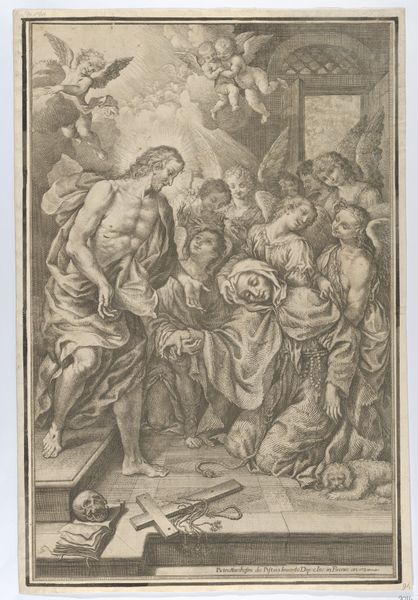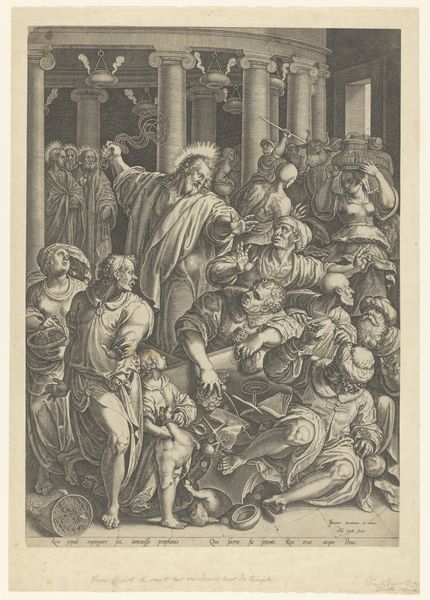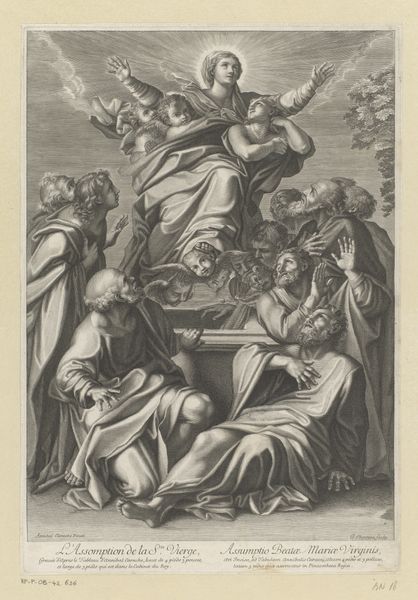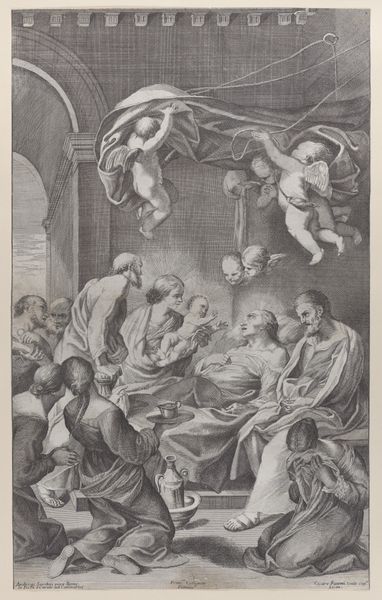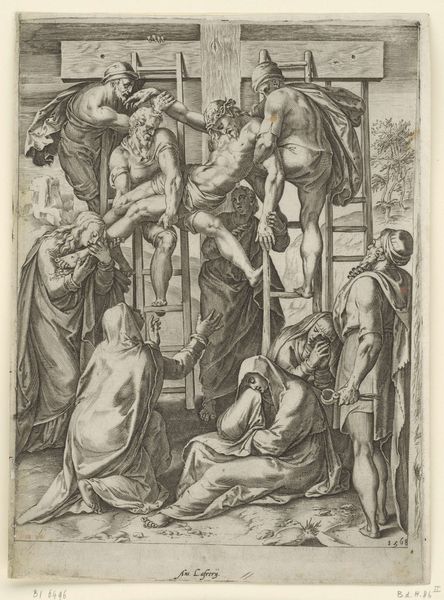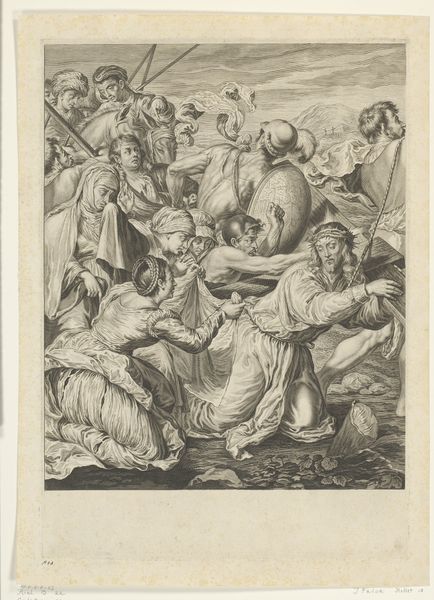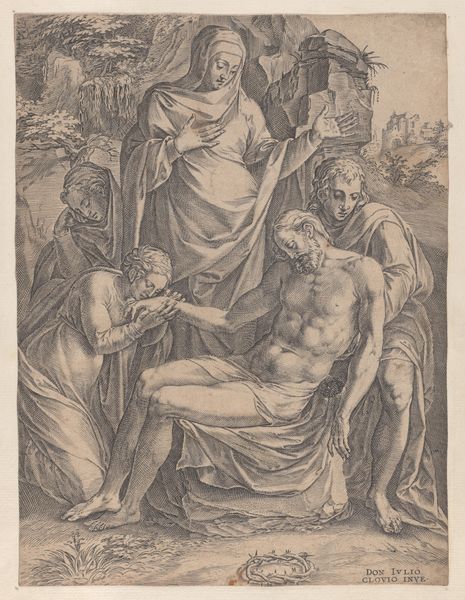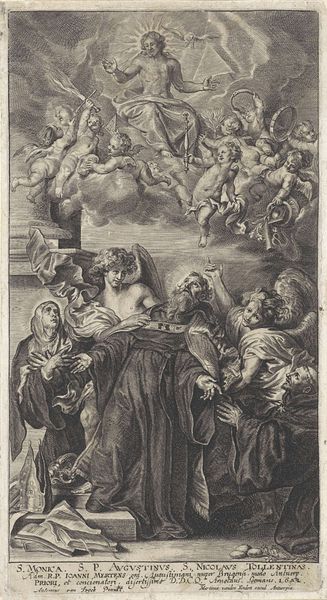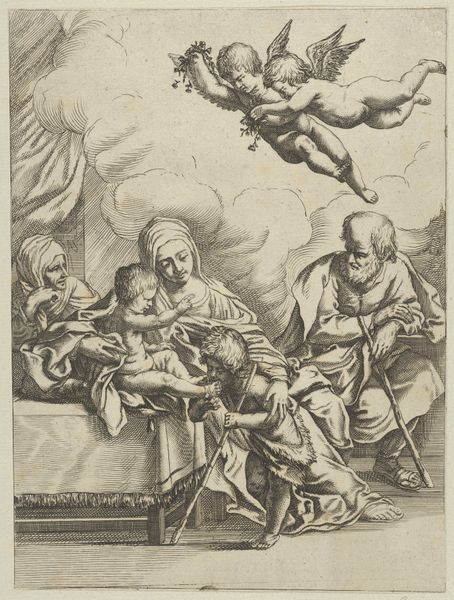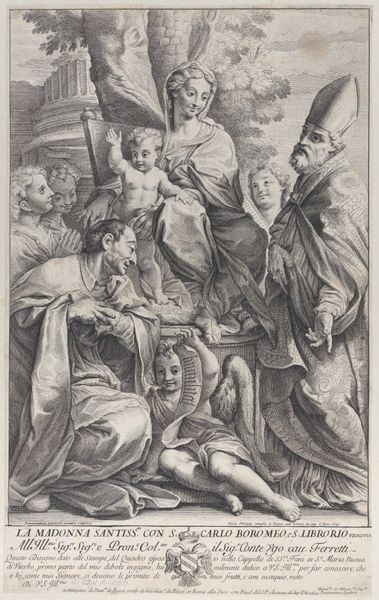
Heilige Familie met Elisabet, Johannes de Doper en engelen 1650 - 1655
0:00
0:00
gillesrousselet
Rijksmuseum
print, engraving
#
baroque
# print
#
figuration
#
history-painting
#
engraving
Dimensions: height 515 mm, width 347 mm
Copyright: Rijks Museum: Open Domain
Editor: This is "Holy Family with Elizabeth, John the Baptist and Angels," an engraving by Gilles Rousselet, created between 1650 and 1655. It strikes me as very… intimate. Despite the grand subject matter, there's a softness to it. How do you interpret this work? Curator: Well, looking through an activist lens, the image resonates on multiple levels. The traditional family structure is present, certainly. But consider the subtle power dynamics at play in 17th-century Europe. What’s remarkable here is how Rousselet depicts these figures, especially the women. He seems to almost give power back to them, especially Elizabeth, as she gently touches baby Jesus. Do you feel that? Editor: I think so. There's definitely a gentleness there, in how Mary interacts with the children too. I’d agree with you. It’s not necessarily obvious. What can that suggest about the era and this work being "allowed"? Curator: Precisely. Look at it this way: art provides sanctioned avenues to comment on gender, faith, and class within the context of Counter-Reformation Europe. Engravings such as this become tools, pushing at the boundaries of societal norms even as they seemingly uphold tradition. What do you notice about the lines in this print, which might suggest commentary or boundaries, given this consideration? Editor: How the lines sort of guide your eye around the whole scene but the characters remain separate despite that motion… almost a tension, I suppose! Curator: Exactly. The Holy Family then, represents not just a sacred ideal but also a space for the negotiation of power and identity within society, presented as “common and proper.” It provides not only an aspirational religious ideal but a safe place to question contemporary notions about family, and the women that exist inside of that entity. Editor: I never would have thought about it that way! So, this work, like a lot of art from the period, is more complex and has potentially competing themes that may comment on historical notions? Curator: It most certainly does. I think, at the heart of activism, looking to the past can provide a pathway towards a more just and equitable present. By examining the forces that have shaped the modern Western world, the context makes that accessible.
Comments
No comments
Be the first to comment and join the conversation on the ultimate creative platform.

